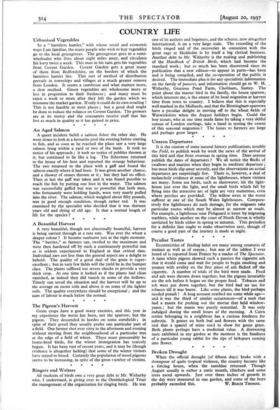Unseen Departures It is the custom of some natural history
publications, notably the Field, to publish week by week the news of the arrival of this bird and that from overseas in spring time. Does anyone publish the dates of departures ? We all notice the flacks of swallows and martins when they begin to meditate departure ; but most birds slip away secretly, and the observations on actual departures are surprisingly few. There is, however, a deal of melancholy evidence at some of the lighthouses, where victims are many. Some sea birds, such as sheerwater, hit the light- house just over the light, and the small birds which fall by flying into the attractive arc of light are very numerous, even where perches are provided. The willow wren is the worst sufferer at one of the South Wales lighthouses. Compara- tively few lighthouses do such damage, for the migrants take particular routes which may be almost as narrow as roads. For example, a lighthouse near Fishguard is beset by migrating warblers, while another on the coast of North Devon is wholly unvisited by birds either in spring or autumn. This prejudice for a definite line ought to make observation easy, though of course a good part of the journey is made at night.






































 Previous page
Previous page